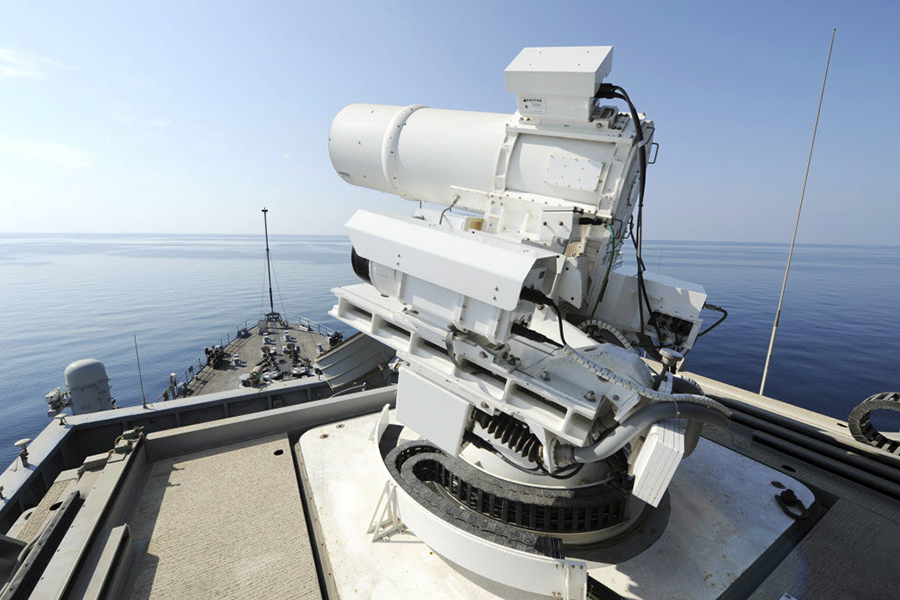Why the Navy is excited about new laser weapons
Loading...
Ever since 1898, when science fiction author H.G. Wells gave us the idea of the heat-ray in his work The War of the Worlds, military minds have dreamed of the announcement made Wednesday by the Office of Naval Research, saying its Navy Laser Weapon System (LaWS) is now shipshape and ready to take aim at enemies.
According to the announcement, LaWS has performed perfectly when tested aboard the amphibious transport dock USS Ponce in the Persian Gulf from September to November.
“It is still a matter of wonder how the Martians are able to slay men so swiftly and so silently,” Mr. Wells wrote. “Many think that in some way they are able to generate an intense heat in a chamber of practically absolute non-conductivity. This intense heat they project in a parallel beam against any object they choose, by means of a polished parabolic mirror of unknown composition, much as the parabolic mirror of a lighthouse projects a beam of light.”
That’s not too far off the announcement made in a press release Wednesday, in which Matthew L. Klunder, chief of naval research, said, "We ran this particular weapon, a prototype, through some extremely tough paces, and it locked on and destroyed the targets we designated with near-instantaneous lethality."
“Laser weapons are powerful, affordable, and will play a vital role in the future of naval combat operations,” according to Klunder’s statement.
The laser could be used to stop threats ranging from drones and helicopters to small patrol boats, he told the US Naval Institute.
A fairly rudimentary computer-generated Navy video shows the LaWS beam of “light” hitting drones and other incoming threats from a floating platform like the one on which it has been recently deployed.
Science fiction fans may be disappointed that hits by the Navy’s new working laser weapon bears little resemblance to weapons in Star Wars or even the disintegrator ray from the 1930s Buck Rogers films.
In this case, the target catches fire and either falls from the sky or sinks, depending on whether it’s a drone or watercraft.
A much better video depiction of the LaWS system was posted to YouTube July 24, 2010 and shows an actual prototype having a successful test event at China Lake and San Nicholas Island off the coast of California.
Military heat rays are not necessarily a new idea. Nikola Tesla is reported to have gone to the government with the notion of a laser-like weapon in July of 1934. His proposal was rejected, according to a PBS report.
At the time, Mr. Tesla made front page headlines in the New York Times that read, "TESLA, AT 78, BARES NEW 'DEATH BEAM,' " though he defined it as a “Peace Beam” aimed at ending war, according to a PBS segment on the subject.
According to PBS, Tesla said he believed the weapon "will send concentrated beams of particles through the free air, of such tremendous energy that they will bring down a fleet of 10,000 enemy airplanes at a distance of 250 miles..."
PBS reports that the scientist tried selling his laser weapon idea to the US government without success.
The Navy says the LaWS weapon is safer than conventional arms that use propellants and explosive warheads, and more cost-effective.
"At less than a dollar per shot, there's no question about the value LaWS provides," Klunder said in the Navy release. "With affordability a serious concern for our defense budgets, this will more effectively manage resources to ensure our sailors and Marines are never in a fair fight."
The laser also takes fewer crew members to operate. It can be fired by one sailor using a video game-like controller.
The Navy hopes to deploy variations of the laser weapon system in the fleet by 2020.








